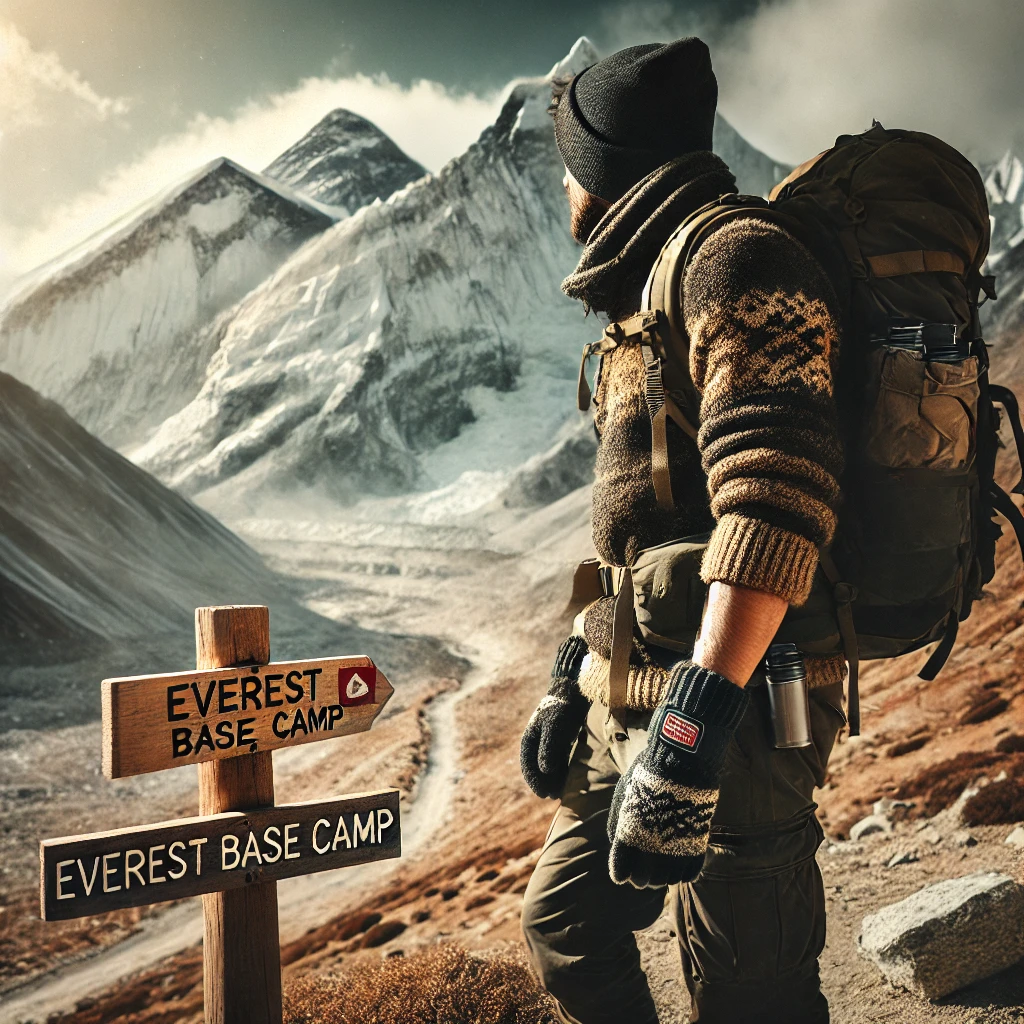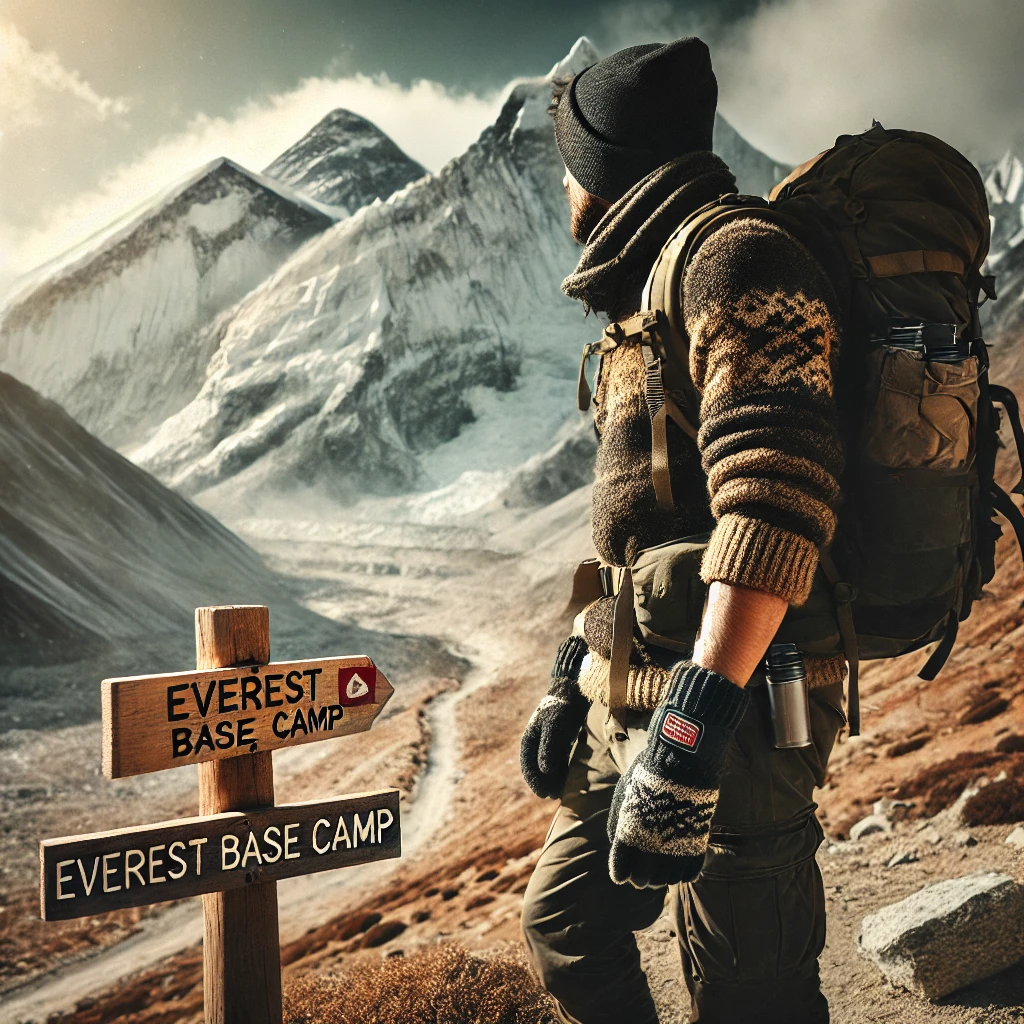Trekking to Everest Base Camp (EBC) is one of the most sought-after adventures in the world. Situated at an altitude of 5,364 meters (17,598 feet), Everest Base Camp offers trekkers the chance to experience breathtaking views of the world’s highest peak, Mount Everest, and the surrounding Himalayan range. However, this iconic trek requires more than just a desire to reach the summit; it demands physical and mental preparation, as well as proper training.
Whether you’re a seasoned hiker or a beginner, the Everest Base Camp trek is a challenging adventure that requires stamina, endurance, and a good fitness level. In this article, we’ll walk you through everything you need to know to train for the Everest Base Camp trek, so you’re physically prepared for the challenges ahead.

Why Training for the Everest Base Camp Trek is Essential
Before we dive into the specifics of how to train for the Everest Base Camp trek, it’s important to understand why physical conditioning is crucial.
The EBC trek is not an extreme mountaineering expedition, but it is a high-altitude trek that takes you through rugged terrain, steep ascents, and challenging conditions. The trek is physically demanding because of its long duration (usually 12-14 days) and varying altitudes, which can range from 2,860 meters (9,383 feet) in Lukla to 5,364 meters (17,598 feet) at Everest Base Camp. The trek also includes significant altitude gain, so acclimatization and physical fitness are key to avoiding issues like altitude sickness.
In short, if you’re physically prepared for the trek, you’re more likely to enjoy the journey, reduce your risk of altitude sickness, and ensure you can complete the trek with confidence.
How to Train for the Everest Base Camp Trek
Training for the Everest Base Camp trek involves improving your cardiovascular endurance, strength, stamina, and mental toughness. The goal is to ensure that your body is ready for both the physical challenges of the trek and the altitude. Here’s a detailed guide on how to prepare for the EBC trek:
1. Cardiovascular Endurance Training
Since the EBC trek involves long hours of walking on varied terrain, it’s important to build your cardiovascular fitness. This will help you maintain a steady pace and manage the physical demands of the trek, especially on the steep ascents.
How to Train:
- Walking: Start by walking on flat surfaces for at least 30-60 minutes, 3-4 times per week. Gradually increase the duration and intensity. Once you’re comfortable, you can start walking on more challenging terrain, such as hilly trails or stairs.
- Hiking with a Weighted Backpack: Carry a backpack weighing 10-15% of your body weight while hiking. This will simulate the conditions of the EBC trek and help you strengthen your legs and core.
- Running or Jogging: Incorporating running into your training routine can help build stamina. Aim for at least 2-3 short runs per week. Increase your running time progressively, working towards longer runs at a steady pace.
- Cycling or Swimming: If you’re unable to hike regularly, cycling and swimming are great alternative ways to improve cardiovascular endurance. Try cycling for 30-60 minutes, at moderate intensity, or swimming laps to keep your heart rate elevated.
Focus on:
- Aerobic conditioning (building endurance)
- Increasing heart rate for sustained periods
- Gradually building up to longer sessions
2. Strength Training for Legs and Core
Strong legs and a stable core are essential for trekking, especially when walking on uneven trails and climbing steep sections. Training your legs will help you tackle the steep inclines and rugged terrain in the Everest region, while core strength will give you stability when navigating difficult paths.
How to Train:
- Squats: Do bodyweight squats and gradually increase the difficulty by adding dumbbells or a barbell. Squats strengthen your quadriceps, hamstrings, and glutes—muscles crucial for trekking.
- Lunges: Forward and reverse lunges are great for improving balance and strengthening the legs. Add weights to increase intensity.
- Step-ups: Use a bench or a sturdy platform to do step-ups. This simulates the action of climbing steps and strengthens your quads and calves.
- Calf Raises: Since the trek involves walking on uneven surfaces, training your calves will help with balance and stability. Stand on a raised surface and lift your body weight, targeting the calf muscles.
- Core Workouts: Include planks, Russian twists, and leg raises to develop your abdominal and lower back muscles. Strong core muscles help improve posture, balance, and stability during the trek.
Focus on:
- Building leg muscles to support steep ascents
- Enhancing balance and stability through core training
- Using exercises that mimic the movements of hiking and climbing
3. Training for Altitude
One of the most significant challenges of the Everest Base Camp trek is altitude. As you climb higher into the mountains, the oxygen levels decrease, making it more difficult to breathe. While training for altitude specifically is not always feasible for everyone, there are ways to simulate the effects of altitude training and prepare your body for higher elevations.
How to Train:
- Hike at Higher Elevations: If possible, try to do some hikes at higher altitudes. This will help your body adapt to the thinning air and prepare you for the challenges of the trek.
- Use Elevation Training Masks: Some trekkers use altitude training masks that simulate lower oxygen levels. While the effectiveness of these masks is debated, they can help you adjust to breathing under more strenuous conditions.
- Increase Duration of Hikes: As you train, spend longer periods hiking at a sustained pace, which can simulate the exertion you’ll feel at higher altitudes.
- Rest and Hydration: Learning how to manage your energy and stay hydrated is vital at altitude. During your training hikes, take plenty of breaks and drink water frequently.
Focus on:
- Gradually increasing your body’s capacity to perform under oxygen-deprived conditions
- Adjusting your breathing patterns for more strenuous activity
4. Simulate the Trek: Backpack Training
When you’re trekking to Everest Base Camp, you’ll be carrying a backpack with your essentials, including water, snacks, a first-aid kit, a camera, and sometimes heavier items like a sleeping bag. Training with a weighted backpack is crucial for ensuring you’re prepared for the load you’ll carry during the trek.
How to Train:
- Train with a Backpack: Start by carrying a backpack with 10-15% of your body weight during your training hikes. As your endurance improves, you can gradually increase the weight to match the load you plan to carry on the trek.
- Trek on Varied Terrain: Train on different terrains—flat ground, inclines, and staircases—while carrying your pack. This will ensure you’re physically ready for all the conditions you’ll face.
Focus on:
- Building endurance while carrying weight
- Preparing your shoulders and hips for the load
5. Mental Preparation and Acclimatization
Training for the Everest Base Camp trek isn’t just about physical conditioning; mental toughness is just as important. Trekking to EBC is long and tiring, and it requires patience, focus, and determination.
How to Train:
- Set Smaller Goals: Break down your training into smaller, achievable goals. This can be increasing your walking distance or improving your time on a particular hike. Achieving smaller goals boosts your confidence and helps build mental strength.
- Practice Trekking in Poor Conditions: Sometimes, the weather on the trek can be challenging. If possible, train in rain, cold, or wind to get used to hiking under less-than-ideal conditions.
- Mindfulness and Breathing Techniques: Breathing exercises or meditation can help manage stress and anxiety, which will be useful during the trek when you’re facing fatigue, altitude sickness, or challenging weather.
Focus on:
- Building resilience and patience
- Managing discomfort and fatigue during long treks
6. Acclimatization and Rest
When you’re trekking in the Himalayas, proper acclimatization is essential for preventing altitude sickness. The higher you go, the less oxygen there is in the air, so it’s important to take rest days, ascend gradually, and allow your body time to adjust.
How to Acclimatize:
- Climb High, Sleep Low: As you trek towards Everest Base Camp, you’ll be stopping at various altitudes along the way. The “climb high, sleep low” strategy allows you to ascend to a higher elevation during the day, but return to a lower altitude to sleep.
- Take Rest Days: Don’t rush the trek. Plan for rest days in places like Namche Bazaar and Dingboche to allow your body to adjust to the higher altitudes before continuing.
- Hydration and Nutrition: Stay hydrated and eat well to help your body cope with the physical demands of high-altitude trekking. Avoid alcohol, which can contribute to dehydration.
7. Practice Trekking Gear Use
Familiarize yourself with all the gear you’ll use on the trek. This includes boots, trekking poles, backpacks, and clothing. The more comfortable you are with your gear, the less likely you are to experience discomfort or injuries
on the trek.
Conclusion
Training for the Everest Base Camp trek requires a well-rounded fitness program that includes cardio, strength, altitude, and mental conditioning. The more effort you put into preparing your body, the more rewarding the experience will be. By following the tips and training strategies outlined above, you’ll be well-equipped to face the challenges of this iconic trek and enjoy one of the world’s most magnificent trekking experiences.
So start training today, and get ready to conquer Everest Base Camp—a once-in-a-lifetime adventure that will test your limits and reward you with memories that will last a lifetime!



Leave a Reply